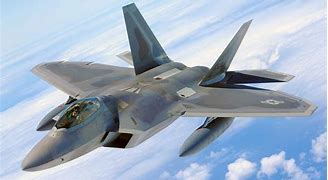**Rocket Runners: The Secret Art of Hauling Heavy Firepower**
(How Do Soldiers Carry Extra Rockets)
Soldiers lugging rockets into battle sounds like something from an action movie. But in real life, it’s a mix of clever engineering, brute strength, and smart planning. Rockets aren’t light. A single round for a launcher like the AT4 or M72 can weigh over 15 pounds. Carry a few extras, and you’re basically hauling a gym’s worth of weights through mud, sand, or mountains. So how do troops manage it without collapsing? Let’s break it down.
First off, the gear matters. Modern rocket launchers are designed to be disposable. Fire one, toss the tube. But soldiers still need backup rounds. These extras get packed into specialized carriers. Picture a heavy-duty backpack with padded slots. Each slot holds a rocket snugly, keeping it safe from bumps or accidental triggers. The packs often clip onto standard military vests, spreading the weight across the shoulders and hips. It’s like a hiking backpack, but instead of snacks and water, it’s stuffed with explosives.
Carrying rockets isn’t just about strapping them on. Balance is key. Too much weight on one side, and you’ll wobble when running. Soldiers adjust the load to sit tight against their bodies. Some rigs even have quick-release straps. Need to ditch the pack in a hurry? One tug, and it drops. Handy when bullets start flying.
But what about bigger rockets? Systems like the Javelin or SMAW fire heavier rounds. These aren’t solo missions. Teams split the load. One soldier carries the launcher, another hauls the rockets. It’s like a deadly game of divide-and-conquer. Communication keeps them synced. No one wants to reach the fight only to realize the ammo’s still 100 yards back.
Weather’s another headache. Rain, snow, or desert heat can wreck equipment. Rocket tubes are sealed tight, but moisture or sand still finds a way. Soldiers wrap extras in waterproof covers or stash them in climate-controlled cases when possible. Cold weather? Batteries in guided rockets can die fast. Troops keep spares close to their bodies, using body heat to keep them functional.
Then there’s the human factor. Ever tried sprinting with a fridge on your back? That’s what carrying rockets feels like. Training kicks in. Soldiers build endurance through brutal drills—running, climbing, crawling with full loads. Muscle memory helps them move efficiently, conserving energy for firefights. Some units even practice “rocket swaps” mid-mission, passing rounds like a relay race under fire.
Gadgets help too. Lightweight alloys and carbon fiber cut down on pack weight. Hydration systems snake through the gear, so soldiers can drink without stopping. Some rigs have built-in shock absorbers, softening the jolt of each step. It’s not high-tech glamour, but it keeps the rockets intact and the soldier moving.
Teamwork ties it all together. A well-drilled squad operates like a machine. The rocket carrier sticks close to the shooter, feeding rounds as needed. Others provide cover, scan for threats, or spot targets. Everyone knows their role. Lose one link, and the chain breaks.
Mistakes happen. A loose strap or misplaced rocket can cost lives. Veterans learn to check their gear obsessively. A quick pat-down before moving, a glance at the straps after diving for cover. It becomes second nature.
(How Do Soldiers Carry Extra Rockets)
In the end, carrying rockets isn’t just about strength. It’s about smart design, relentless training, and trusting the soldier next to you. Every extra round adds weight, but it also adds firepower. And in combat, firepower keeps you alive.
Inquiry us
if you want to want to know more, please feel free to contact us. (nanotrun@yahoo.com)




